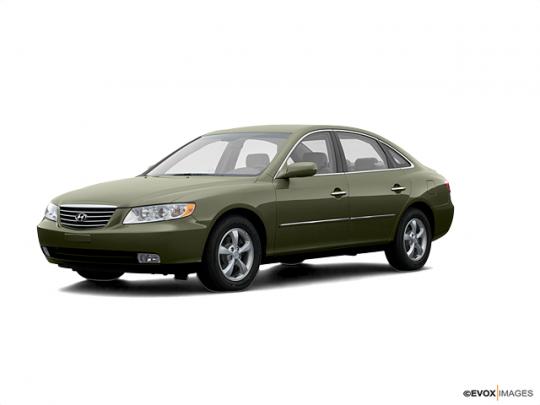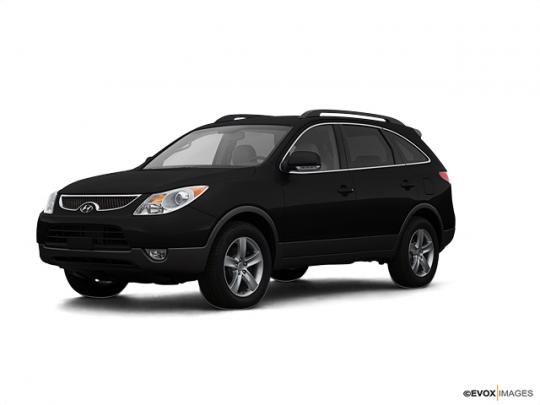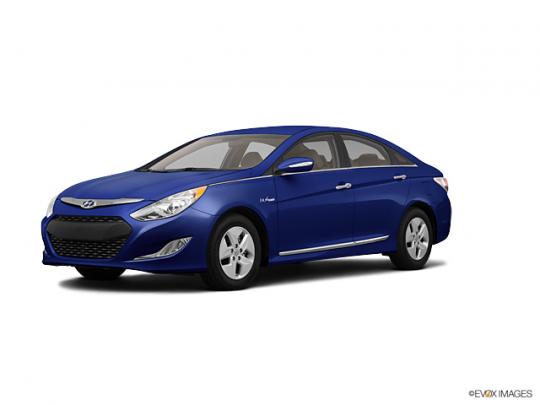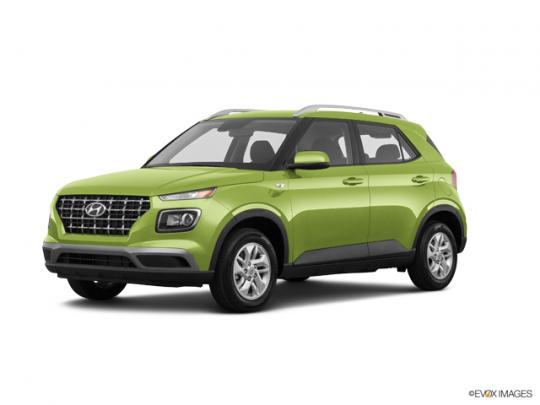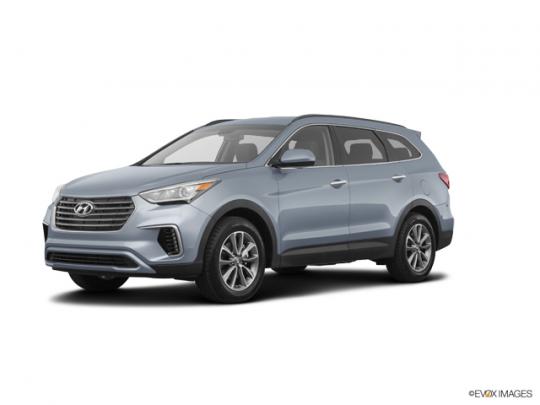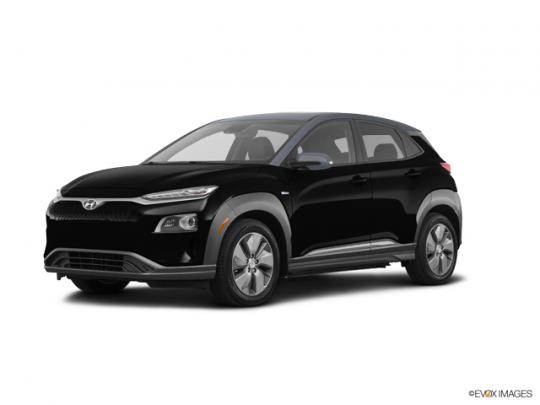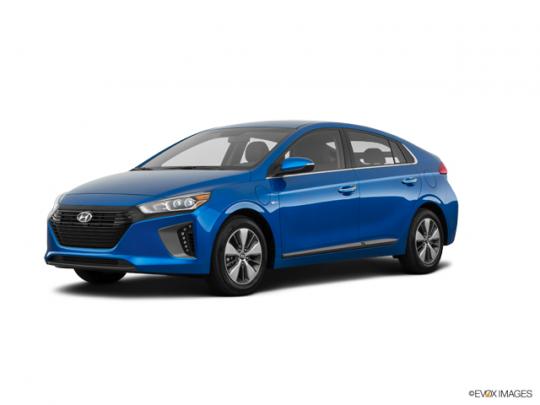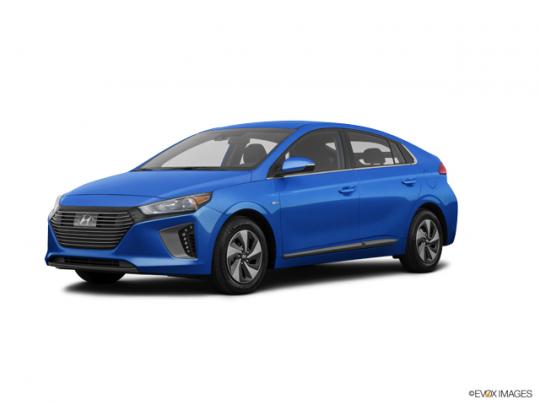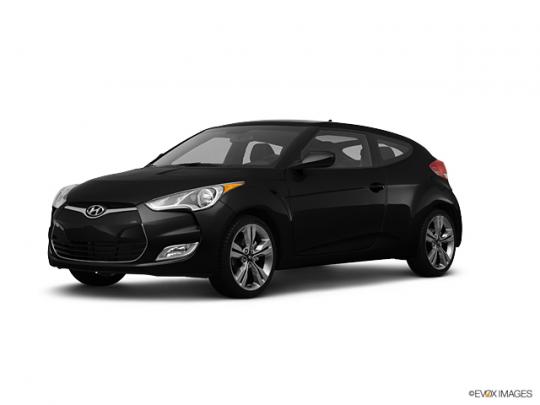About Hyundai Cars
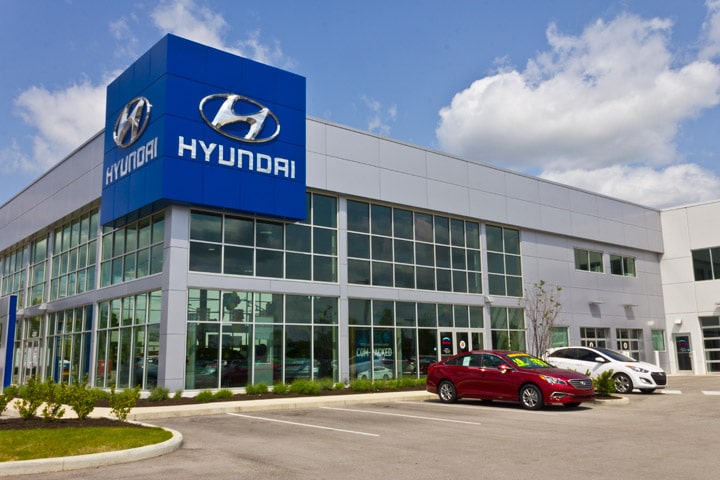
Hyundai is a multinational conglomerate with at least two automotive divisions, Hyundai Motor and Hyundai Motorsports, headquartered in Seoul, South Korea. It is the third-largest auto manufacturer worldwide by volume, with about 7.2 million vehicles produced per year, behind only Volkswagen and Toyota, which produce about 10 million vehicles each per year. Hyundai became Korea’s largest auto manufacturer in 1998 when it purchased 33 percent of the second-largest Korean auto manufacturer, Kia, in 1998. The company is also the whole owner of the luxury brand, Genesis.
The company was formed as a manufacturing and construction business in 1947, and the automobile manufacturing segment was created in 1967 when Ford Motor Co. helped it to develop its first vehicle, the Cortina. Their next model, the Pony, was developed through the work of several British men with auto manufacturing experience gained at Austin Morris/Leyland motors and an engine from Mitsubishi. Foreign markets included Britain in 1982 and Canada in 1984, allowing Hyundai to sell 1,000,000 vehicles by 1985. The company began selling vehicles in the U.S. in 1985, with the Excel and Sonata its affordable marquee options. In 2006 there was a shakeup at the corporate headquarters as the president of Hyundai, Chung Mong Koo was arrested for embezzling about $106 million and forced to resign. The automaker has production facilities in Russia, China, the Czech Republic, and 5,000 dealerships in 193 countries.
Quick Facts
-
Hyundai Sonata is the most-recalled Hyundai vehicle
-
Hyundai Excel is the least expensive car from Hyundai starting from $ 5,395.00
-
Hyundai Ioniq Hybrid has an MPG of 57 miles/gallon / 59 miles/gallon which is the highest gas mileage in the city and on highways
-
Hyundai Santa Fe has the most trims available with 1215 variations released
 Number of Hyundai Sales in the United States
Number of Hyundai Sales in the United States
 Hyundai U.S. Sales Reports - By Month
Hyundai U.S. Sales Reports - By Month
| Year | Jan | Feb | Mar | Apr | May | Jun | Jul | Aug | Sep | Oct | Nov | Dec |
|---|---|---|---|---|---|---|---|---|---|---|---|---|
| 2015 | 44,505 | 52,505 | 75,019 | 68,009 | 63,610 | 67,502 | 71,013 | 72,012 | 64,015 | 60,005 | 60,007 | 63,508 |
| 2016 | 45,011 | 53,009 | 75,310 | 62,213 | 71,006 | 67,511 | 75,003 | 70,518 | 65,399 | 61,304 | 61,201 | 60,572 |
| 2017 | 44,685 | 51,438 | 67,510 | 61,651 | 58,259 | 52,894 | 52,419 | 52,507 | 55,271 | 51,224 | 55,435 | 61,646 |
| 2018 | 39,630 | 44,732 | 60,154 | 55,035 | 64,980 | 63,256 | 51,137 | 56,929 | 56,940 | 52,653 | 57,082 | 65,107 |
| 2019 | 40,796 | 45,612 | 61,177 | 55,420 | 66,121 | 64,202 |
 Hyundai Car Sales in The United States from 2015 to 2019
Hyundai Car Sales in The United States from 2015 to 2019
| Year | Car Sales |
|---|---|
| 2015 | 761,710 |
| 2016 | 768,057 |
| 2017 | 664,939 |
| 2018 | 667,635 |
| 2019 | 333,328 |
 Average Pricing for Hyundai Popular models
Average Pricing for Hyundai Popular models
| Popular Hyundai Models | Average Price |
|---|---|
| Accent | $ 11,882.48 |
| Tucson | $ 19,961.68 |
| Tiburon | $ 17,111.13 |
| Genesis Coupe | $ 24,721.08 |
| Azera | $ 28,313.24 |
| Veracruz | $ 29,069.62 |
| Sonata Hybrid | $ 20,294.10 |
| Elantra Wagon | $ 12,554.68 |
| Venue | $ 16,601.35 |
| Sonata Plug-In | $ 36,780.00 |
| Santa Fe XL | $ 32,342.86 |
| Kona EV | $ 41,526.67 |
| Ioniq Electric | $ 34,538.33 |
| NEXO | $ 61,800.00 |
| Ioniq Plug-In Hybrid | $ 28,300.00 |
Interesting Facts About Hyundai
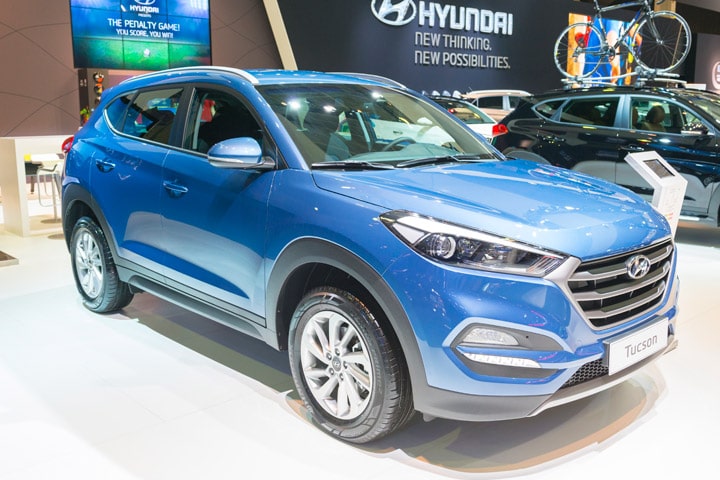
In 1986 Hyundai entered the U.S. market with one model, the Excel, in a variety of trims, and set a record for most sales ever for a manufacturer’s debut year, over 168,000. However, sales plummeted in subsequent years as issues with reliability surfaced. By 1992 the carmaker was forced to offer two years of free maintenance to lure buyers back.
In 2004 the company opened a $50 million facility in California’s Mojave Desert with a 6.4-mile loop, special pavement, and hill feature outdoor test tracks and 30,000 square foot indoor testing and office area.
Hyundai Kia had been the third-largest automaker in China but suffered a major setback in late 2018, apparently due to overcapacity. The company posted a $114 million loss, with sales off by 23 percent, in the final quarter of 2018 and expected similarly poor sales in 2019 due to trade wars. Ford, too, experienced poor Chinese sales in the final quarter of 2018.
The J.D. Power survey of initial vehicle quality found Hyundai and Kia vehicles as good as or better than German and other highly regarded autos in 2018. The survey collects owner complaints about new vehicles in the first three months of ownership. Another J.D. Power analysis of vehicle dependability, the VDS, collects owner issues within the first three years of ownership – and Hyundai-Kia scored third place overall. One analysis of the results says that Hyundai-Kia’s telemetrics, which is the phone-vehicle interface, is better than most on the market, resulting in fewer owner issues.
Japan is one market in which Hyundai has not found success. After selling only about 15,000 vehicles in Japan from 2001-2009, the carmaker pulled its passenger vehicles out of the market. Some blamed the company’s poor decision to offer its midsize vehicles there rather than smaller subcompacts, which are apparently more desirable. Hyundai only sells its buses in Japan.
Hyundai’s factory in Ulsan is the most productive in the world, finishing a new car every ten seconds. Many of the plant’s 34,000 employees live on-site, where they can choose from three dozen restaurants at the 15 million square meter facility.
The company unveiled a new hydrogen-powered fuel-cell SUV, the Nexo, which has a range of 380 miles, emits only water, and charges in just 10 minutes (as compared 3-14 hours for most electric cars.)
 How to Identify and Decode Hyundai VINs
How to Identify and Decode Hyundai VINs
World Manufacturer Identifier
The first three digits of the VIN for any Hyundai vehicle are known as the World Manufacturer Identifier (WMI). The WMI describes the manufacturer, country of origin, any other relevant information. The WMI is assigned by the Society of Automotive Engineers (SAE) and is regulated by the National Highway Transportation Safety Administration (NHTSA).
The NHTSA identifies vehicles that are subject to safety recalls using VINs. Drivers can always use the free VIN check provided by NHTSA to identify if their vehicle is subject to a safety recall.
Hyundai vehicles use the first character of the WMI to identify the geographical region where the vehicle was manufactured. Hyundai uses the following codes:
| A | Africa (South Africa) |
| K | Asia (South Korea), Australia |
| M | Asia (India) |
| N | Asia (Turkey) |
| P | Africa (Egypt) |
| T | Europe (Czech Republic) |
| U | |
| Z | |
| 2 | Canada |
| 3 | North America (Mexico) |
| 5 | USA |
| 9 | South America (Brazil) |
The second character identifies the specific manufacturing division. Hyundai uses the following codes:
| A | HMI (Hyundai Motor India) |
| C | Cars (Roslyn, South Africa) |
| D | SUV's (Roslyn, South Africa) |
| E | HME (Hyundai Motor Egypt) |
| G | |
| H | Bromont Assembly Plant, Canada |
| K | |
| L | HAOS (Hyundai Assan Otomotiv Sanayi), Turkey |
| M | HMC (Hyundai Motor Company), South Korea |
| N | HMMA (Hyundai Motor Manufacturing Alabama), USA |
| 5 | Caoa Montadora de Veículos S/A, Anapolis/GO, Brazil |
The third and final character in the WMI identifies the type of vehicle. Hyundai identifies vehicle types with the following codes:
| A | Passenger Car |
| B | Trailer |
| C | Special car |
| D | Recreational |
| E | Tractor |
| F | Truck, van |
| H | Passenger car, MPV, RV |
| I | |
| J | Minibus, bus, semi-MPV |
| L | Light Motor Vehicle (Car) |
| M | |
| N | Truck, bus, van |
| P | SUV (All New Tucson) 2006 VIN, Passenger |
| X | Passenger car, MPV, RV |
| Y | Bus |
| Z | Truck, van |
| 3 | Semi-Trailer |
| 4 | |
| 5 | |
| 8 | MPV (Multi-Purpose Vehicle) |
Characters in VIN positions four through eight identify specific attributes of the vehicle. These codes detail the engine, model, trim, and other relevant information.
Position four is used by Hyundai to identify the model of the vehicle. These codes change from year to year, depending on the models currently being manufactured. Hyundai uses the following codes currently:
| A | Xcent |
| B | Getz |
| C | Accent 00–, Ioniq 19 |
| D | Genesis Coupe 09-Elantra |
| E | Sonata 06 – |
| F | XG300 01, XG350 02 – 05, |
| G | Genesis, 09 – |
| H | Tiburon 03 – 08, |
| J | Elantra 96 – 00, Tiburon |
| L | Cantus 16 - |
| M | Entourage 07 – |
| N | Veracruz 07 – |
| S | Santa Fe 01 – |
| T | Veloster |
| U | Excel X3. |
| V | Accent 97-99 |
| W | Sonata 99 - 05 |
The fifth character in the VIN is the body type or trim level identifier. The following codes are current for Hyundai vehicles in the U.S.:
| A | 5-door hatchback |
| D | 4-door wagon |
| E | 2-door sedan |
| F,M | 4 door sedan |
| G | 2-door coupe |
| W | 5-door wagon Azera 06, H100 - |
| B | GL Santa Fe 01 – 04; 3.8L Genesis |
| C | GLS Santa Fe, 01 – 06; Limited Santa Fe, 06; SE Azera, 06 – 07; Limited Azera, 06 –; GLS Azera, 07 –; SE Entourage, 07; GLS or Limited Entourage, 07 –; 4.6L Genesis, 09 –; Elantra Touring, 09 –, Base Veloster, 12- |
| F | Base or L Accent, 00 – 04 |
| G | GL or GS Accent, 00 – 04; GT Accent, 03 – 05; GLS Accent, 05; = GLS Santa Fe, 07 – |
| H | SE or Limited Santa Fe, 07 |
| M | GL (Base) Tiburon, 03 – 04; GS Tiburon, 05 – 08; GL Tucson, 05 – 06; GLS Tucson, 07 –; GS Accent, 07 – |
| N | GLS Accent, 06 –; SE Accent, 07 –; GLS or GT Elantra, 01 – 06; Limited Elantra, 06; GLS Tucson, 05 – 06; LX Tucson, 05; Limited Tucson, 06 –; SE Tucson 07 –; Limited V6 Tucson, 08 –; GT Tiburon, 03 – 08; SE Tiburon, 05 – 08; GT Limited Tiburon, 06 – 08 |
| T | GL Sonata, 06; GLS Sonata, 07 – |
| U | GLS (Base or L) XG300, 01; XG350, 02 – 05; GLS or LX Sonata, 06; Limited Sonata, 06 –; SE Sonata, 07 –; Limited Elantra, 07; GLS or SE Elantra, 07 –; GLS, Limited Veracruz, 07 –; SE, Veracruz, 07 |
The sixth character provides more detailed information about the trim level or body type of Hyundai vehicles. The following codes are used:
| 1 | base |
| 2 | GL |
| 3 | GLS, LS, LX, or GS |
| 1 | wagon FWD |
| 2 | minivan (Long Coach) |
| 3 | 3 door hatchback |
| 4 | 4 door sedan |
| 5 | 5 door hatchback |
| 6 | coupe |
| 7 | wagon FWD |
| 8 | wagon |
| 5 | New Tucson GL |
The seventh character denotes the safety equipment installed by the Hyundai factory, except for heavy-duty equipment, where the seventh character is used to denote the Gross Vehicle Weight.
| 1 | Active 3-point |
| 2 | Passive |
| 3 | Driver-side airbag (manual belt) passenger-side passive |
| 4 | Dual airbags (manual belts) |
| 5 | Depowered airbags |
| 6 | Advanced airbags or depowered airbags with suppression |
| 2 | GVWR Class C (4,001-5,000 lbs) |
| 3 | GVWR Class D (5,001-6,000 lbs) |
The digit in the eighth position is used to identify the engine originally installed in the Hyundai car or truck. Hyundai uses the following codes for current and recent year U.S. vehicles, but it should be noted that these codes change from year-to-year depending on the engines offered.
| 2 | 1.6L Turbo GDI (Gasoline Direct Injection), New Tucson 16-18 |
| B | 2.5L L4 SOHC 8V, 1975 cc DOHC 4 cyl. Tucson, 05 -, 2351 cc DOHC 4 cyl. Santa Fe, 01 - 04 |
| C | 1599 cc DOHC 4 cyl. Accent, 01 -, 2359 cc DOHC 4 cyl. Sonata, 06 -, 3778 cc DOHC V6. Veracruz, 07 -; 1591 cc DOHC 4 cyl. FFV (E22/E100) HB20 12-, |
| D | 1975 cc DOHC 4 cyl. Elantra, 01-, 1975 cc DOHC 4 cyl. Tiburon, 03 – 08, 2656 cc DOHC V6 Santa Fe, 01 -, 2656 cc DOHC V6 Tucson, 05 -, 2972 cc DOHC V6 XG300, 01 –, 3342 cc DOHC V6 Azera, 07I30 13-; 1998 cc DOHC 4 cyl. FFV (E22/E100) Tucson/IX35 12-,1591 cc DOHC 4 cyl. Veloster. |
| E | 3497 cc DOHC V6 XG350, 02 - 05, 3497 cc DOHC V6 Santa Fe, 03 - 06, 3342 cc DOHC V6 Santa Fe, 07 -, 3778 cc DOHC V6 Genesis, 09 – |
| F | 1975 cc DOHC 4 cyl. Accent, 97 – 01, 1975 cc DOHC 4 cyl. Accent, 99 - 00, 2656 cc DOHC V6 Tiburon, 03 - 08, 3342 cc DOHC V6 Sonata, 06 -, 3778 cc DOHC V6 Azera, 06 -, 4627 cc DOHC V8 Genesis, 09 - |
| G | 1495 cc SOHC 4 cyl. Accent, 00 - 02 |
| H | 2656 cc DOHC V6 Sonata, 02 - 05 |
| L | 1349 cc SOHC 4 Accent, 97-98 |
| N | 1495 cc DOHC Excel X3. |
| S | 2351 cc DOHC 4 cyl. Sonata, 99 - 05 |
| V | 2493 cc DOHC V6 Sonata, 99 - 01 |
| 3 | 3778 cc DOHC V6 Entourage, 07 - |
| M | Sonata 1999 cc DOHC 4 cyl. Tucson, 05 -, 2351 cc DOHC 4 cyl. Santa Fe, 01 - 04 |
The ninth digit is called the Check Digit. This character will be a numeral between 0 and nine, or the letter X. These codes represent the result of a mathematical equation using the remaining digits in the VIN that allows for the verification of a valid VIN. This is used to identify vehicles that have altered VINs. VINs may be checked free of charge using the NHTSA VIN Check Digit Calculator.
Position 10 is the model year the vehicle was manufactured. Hyundai uses the following codes.
| A | 1980, 2010 |
| B | 1981, 2011 |
| C | 1982, 2012 |
| D | 1983, 2013 |
| E | 1984, 2014 |
| F | 1985, 2015 |
| G | 1986, 2016 |
| H | 1987, 2017 |
| J | 1988, 2018 |
| K | 1989, 2019 |
| L | 1990, 2020 |
| M | 1991, 2021 |
| N | 1992, 2022 |
| P | 1993, 2023 |
| R | 1994, 2024 |
| S | 1995, 2025 |
| T | 1996, 2026 |
| U | 1997, 2027 |
| W | 1998, 2028 |
| X | 1999, 2029 |
| Y | 2000, 2030 |
| 1 | 2001, 2031 |
| 2 | 2002, 2032 |
| 3 | 2003, 2033 |
| 4 | 2004, 2034 |
| 5 | 2005, 2035 |
| 6 | 2006, 2036 |
| 7 | 2007, 2037 |
| 8 | 2008, 2038 |
| 9 | 2009, 2039 |
Position 11 is used to note the specific manufacturing facility that built the vehicle. Hyundai uses these codes to identify its factories. Note that the factory code and the WMI may differ, as vehicles are often assembled at one facility from components that are manufactured at another.
| A | Asan, Korea |
| B | Bromont, Canada (2HM) / Gaborone, Botswana (KMH) / Anapolis, Goiás, Brazil (Caoa Montadora plant) |
| C | Changwon, Korea. Cheongju, Korea |
| H | Montgomery, Alabama, USA |
| J | Nošovice, Czech Republic (TMA) / East London, South Africa (AC5/ADD) |
| K | Gwangju, Korea (Kia plant) |
| L | Žilina, Slovakia (Kia plant) |
| M | Chennai, India |
| P | Piracicaba, São Paulo, Brazil (Hyundai Motor Brasil plant) |
| R | Sankt Petersburg, Russia |
| U | Ulsan, Korea |
| W | Los Angeles, USA |
| Z | İzmit, Turkey |
| 5 | Osnabrück, Germany (Karmann, KNA) / Žilina, Slovakia (Kia plant, KNE) |
| 6 | Sohari, Korea |
The remaining characters in positions 12 through 17 are the vehicle serial number. These digits are like the vehicle’s fingerprint and are useful for identifying where in a production sequence the particular vehicle was made. It should be noted that serial numbers are not consecutive. A lower number does not always indicate an early production vehicle.
 Safety and Recalls for Hyundai Cars
Safety and Recalls for Hyundai Cars
There is a recall for 2012-2016 Kia Soul models made by Hyundai, which affects over 300,000 cars. The catalytic converters on these vehicles, which are used to reduce emissions, could be damaged by hot exhaust gases, leading to engine damage. One source reports: there have been 3,100 vehicle fires in recent years.
Occupant detection sensors for front passenger seats have been recalled, affecting at least 7,500 vehicles. A malfunction may allow the airbag to deploy erroneously. This affects:
- 2015 Hyundai Accents built from September 15, 2014, and February 10, 2015, and
- 2012-2013 Hyundai Azera sedans built from May 22 to November 23, 2012.
Over 100,000 Hyundai Tucson SUVs built from 2011 to 2013 and another 32,000 Kia Sportage SUVs released in 2011-2012 have been recalled due to a manufacturing error that affects the oil pan. The oil on these models may leak and lead to engine damage, stalling, and potentially a fire.
Kia Sedona minivans made between 2015 and 2018 with a manually adjusted front passenger seat may have a defect in the wiring harness that detects the weight of the person in the seat. If the harness breaks from excessive use, it could allow the airbag to deploy erroneously in a crash. This recall affects over 90,000 vehicles.
Those owners of Hyundai 2006-2010 Hyundai Sonata and 2006-2011 Hyundai Azera, who live in cold-weather states, have a recall on their vehicles for corrosion from road salt on the rear cross member that could change the rear-wheel alignment. This recall affects some 239,000 vehicles.
 Hyundai Recalls
Hyundai Recalls
Hyundai had 1139 from 1980 to 2025 of which the most recalled model is 2016 Hyundai Sonata and the least is 1991 Hyundai Sonata. Hyundai had the most recalled during 2022.
| Model | Number of Recalls |
|---|---|
| 2016 Hyundai Sonata #1 with most recalls | 5 |
| 2022 Hyundai Venue #2 with most recalls | 4 |
| 2013 Hyundai Elantra #3 with most recalls | 4 |
| 2001 Hyundai XG300 #4 with most recalls | 4 |
| 2018 Hyundai Elantra GT #5 with most recalls | 2 |
| 2015 Hyundai Genesis #6 with most recalls | 14 |
| 2017 Hyundai Sonata Hybrid #7 with most recalls | 13 |
| 2008 Hyundai Azera #8 with most recalls | 10 |
| 2022 Hyundai Sonata #9 with most recalls | 1 |
| 2010 Hyundai Accent #10 with most recalls | 1 |
| 2005 Hyundai Sonata #11 with most recalls | 1 |
| 1991 Hyundai Sonata #12 with most recalls | 1 |


